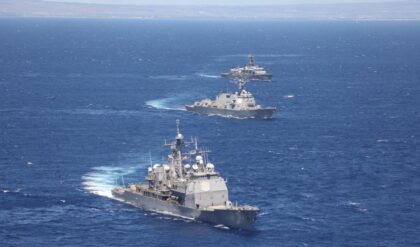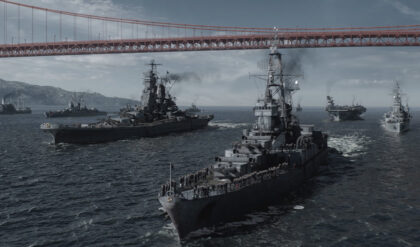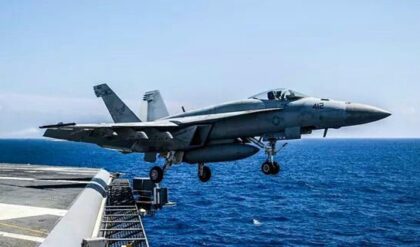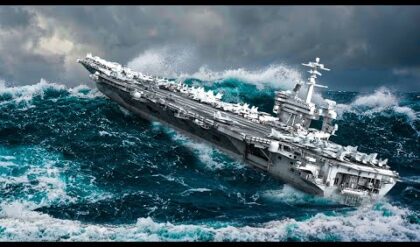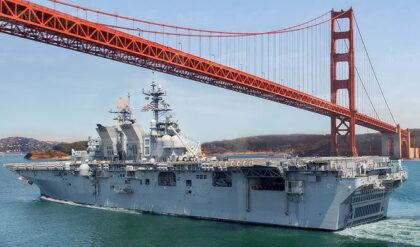The RB-2 was a pioneering lifting body biplane from the 1920s that was the largest airliner in the world at the time. Looking like a flying caravan, the RB-2 was actually capable of transporting an entire car inside, and did so regularly for the Hudson Motor Car Company.

But like the rest of its designer’s aircraft, the RB-2 never caught on, and is now a forgotten footnote in aviation history.
The origins of the RB-2 lay in a previous, but very similar design, the Burnelli RB-1. The RB-1 was created by aircraft designer Vincent Burnelli.
Burnelli had been designing “conventional” aircraft since the early years of World War One, but after the war he focused his efforts into pioneering the lifting body concept.
A lifting body aircraft is one where the fuselage itself generates lift in addition to the wings. Lifting bodies are very efficient at higher speeds, and can allow for reduced wing size and a lighter weight.
 Burnelli designed the world’s first large commercial airliner, the Lawson L-4.
Burnelli designed the world’s first large commercial airliner, the Lawson L-4.
Burnelli was ahead of the curve with his work, as it wasn’t until the 1960s and ’70s that lifting wings were properly researched.
By using such a design for an airliner, Burnell could increase the fuselage’s volume for more passengers while reducing the wing size and fuel consumption.
Burnelli would produce a number of unique and strange-looking lifting body aircraft over the course of his life, although none would catch on.
RB-1
His first lifting body aircraft was the RB-1, which first flew in 1921. The RB-1’s fuselage was 4.3 meters wide (14 ft) and could carry up to 30 passengers – this was an impressive number for the time, equalling the Douglas DC-3 that came 15 years later.
The fuselage was so large that one could stand up inside it aerofoil shape.
The fuselage was flanked by two 22 meter (74 ft)-wide wings in a biplane arrangement, although they were smaller than on a typical biplane of this size thanks to the additional lift generated by the fuselage.
 Burnelli’s RB-1. The RB-1 can be easily identified by its two wheels per landing gear strut.
Burnelli’s RB-1. The RB-1 can be easily identified by its two wheels per landing gear strut.
At the rear of the fuselage were two small rudders and horizontal surfaces.
Power came from two 420 hp V12 Liberty engines positioned on either corner of the fuselage in the nose. The engines were so close together that there was only a single inch between their propellers.
Behind the engines was two open cockpits that each contained a pilot, and next to them was two mechanics.
Overall the RB-1 weighed 6,600 kg (14,550 lbs) and had a top speed of just over 100 mph.
 Passenger cabin inside the RB-1.
Passenger cabin inside the RB-1.
The RB-1 had decent flying characteristics and an impressive payload, but sadly it was damaged in 1923 and destroyed.
Undeterred, Burnelli set to work on creating an improved version.
RB-2
In 1923 came his next take on the lifting body airliner concept, the RB-2. It followed the same general design as the RB-1, but incorporated some much needed improvements, like more powerful engines, and modern developments, like an all-metal skin.
The RB-2’s wingspan was slightly increased over its predecessor, now 24.3 meters (80 ft) in span, and covered with a corrugated duralumin skin.
 The RB-2. Note the small gap between the propellers.
The RB-2. Note the small gap between the propellers.
This did increase the weight of the aircraft, now with an empty weight of 5 tons, but this was countered by more powerful engines. This time, two 650 hp Galloway Atlantic V12 engines were used, located in the same positions as on the RB-1.
The Galloway Atlantic was a Scottish-designed engine, built by joining two 6-cylinder Beardmore-Halford-Pullinger Adriatic engines together to share a common crank. It was one of the most powerful aircraft engines of its day, at a time when most produced only a few hundred horsepower.
 The RB-2 had one of the highest payloads of its day. Its interior was so large that you could walk around inside.
The RB-2 had one of the highest payloads of its day. Its interior was so large that you could walk around inside.
These engines were reportedly replaced later on by 600 hp Rolls-Royce Condor V12s, although it is unclear why.
Inside was yet another cavenous interior, with enough room for around 30 passengers of up to three tons of cargo!
Again, this was a seriously impressive amount for the day and something no other aircraft could manage at the time. In fact, its lifting power was famously demonstrated by Hudson Motors when it carried an Essex car sales tour for the Hudson company.

The Hudson Essex inside the fuselage of the RB-2.
Part of the cargo area was outfitted as on office for this tour, so impressed buyers could sign off their new purchase on board.
Top speed of the RB-2 was 110 mph, and its cruising speed was 90 mph. It first flew in August 1924, flying above 4,000 ft on this first flight.
Fate of the Burnelli Lifting Body Aircraft
Unlike the RB-1, the RB-2 was not list in a crash and was actually able to prove its capabilities. However it didn’t receive any commercial interest, and only a single example was built.
Reportedly the aircraft was used by the Aerial Transport Company for a few years transporting cargo, and was eventually scrapped. However, according to photos, the RB-2 appears to have been lost in a crash.
 The RB-2 is seen here damaged after a crash.
The RB-2 is seen here damaged after a crash.
After the RB-1 and RB-2, Burnelli abandoned biplane lifting bodies and focused on monoplane designs. The first of which was the CB-16, a monoplane with a lifting body fuselage that resembled a modernised, sleeker version of his previous attempts.
Inside was a large cabin, equipped for up to 20 passengers. It even contained a toilet and a kitchen!

Burnelli’s UB-20, which first flew in 1930, carrying a car under its belly.
Coincidentally, the CB-16 was the first twin-engine aircraft with retractable landing gear.
As the fuselage of Burnelli’s designs carried most of the weight of the aircraft, they were exceptionally strong. Burnelli was able to use this to increase crew and passenger safety, and often claimed that his aircraft were the safest.
He believed in the lifting body concept so much that he continued working on it all the way to his death in the mid-1960s.
Despite his efforts, his works would never catch on in the aviation industry, and he never secured any major contracts for his designs. His ultimate design, the CBY-3 Loadmaster, would only have a single example built.
